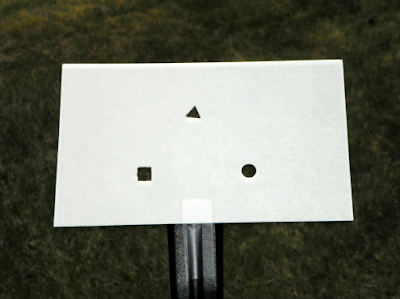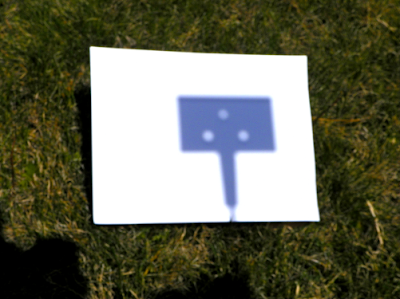
The sunlight passing through the holes was allowed to fall on a white sheet of paper at ground level.

As can be seen all the images are circular. So the shape of the opening is relatively unimportant. It just selects which rays of light are allowed to reach the image. The angular distance of a point on Sun from its center determines the where its image will be located. The blurriness of the image is due to the size of the hole. Note that the image of the triangle is not as bright since its area is slightly smaller.
Aristotle's statement that the points that are more distant from the optical axis being less distinct has some truth to it. The brightness of a point in the image depends on how many points of the Sun are cast onto it since the aperture is of finite size. The aperture does a 2D scan of the Sun and its image changes continuously as the position on the screen changes. As one crosses the edge of the Sun fewer points on the Sun contribute to the image brightness as it decreases radially. The edge of the Sun in the image is one "line" wide if a line is defined as the angular size of the aperture relative to the image point.
This is the simpliest method for viewing an eclipse and can be quickly implemented. The size of the aperture can be adjusted to increase or decrease the brightness of the Sun's image. And the size of the image can be magnified by increasing the distance of the screen from the aperture. Since the eclipse in May will last about two hours and end towards sunset the altitude of the Sun will decrease from about 16 degrees to nearly zero degrees and one will have nearly horizontal rays of light to work with. The proximity to the horizon will also filter out some of the sunlight and will ease viewing somewhat. It will make an interesting sunset although it might be a bit of a distraction for some commuters. So if you want to watch the eclipse it might be best to take a "time-out."
No comments:
Post a Comment